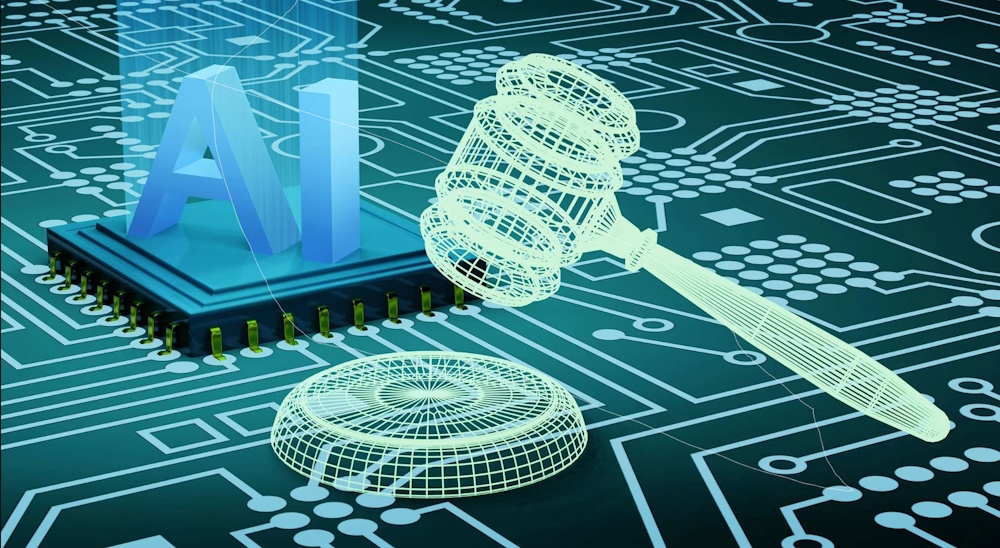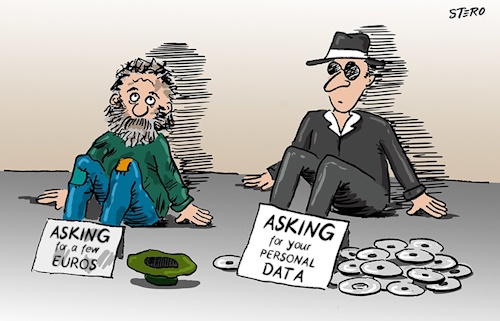 AI and Data Privacy
AI and Data Privacy
Data privacy is key as AI advances and becomes more pervasive in everyday life
Related: AI Ethics | Bias | Explainable AI
Increasingly, AI and data privacy involves adhering to complex regulations and adopting best practices to safeguard sensitive information.
Regulatory frameworks like the European Union's Artificial Intelligence Act (AI Act) establish rules to govern AI and address data privacy issues. These frameworks are designed to balance technological innovation with the protection of individual rights, ensuring ethical and responsible use of AI systems. Mechanisms such as AI regulatory sandboxes and the establishment of governance bodies like the AI Office play vital roles in guiding providers through the compliance process. These measures are intended to facilitate innovation by offering controlled environments where new AI solutions can be tested under regulatory supervision. EU Member States are mandated to develop stringent enforcement measures and penalties to ensure effective implementation of these regulations. Confidentiality and reporting are also involved, with authorities required to respect the confidentiality of the information they handle while reporting any relevant findings to maintain transparency and accountability.

 Key Privacy Concerns
Key Privacy Concerns
- Massive data collection: AI systems require vast amounts of personal data, increasing the risk of exposure.
- Unauthorized access: Large datasets are attractive targets for hackers and malicious actors.
- Secondary use: Data collected for one purpose may be repurposed without consent.
- Inference of sensitive information: AI can deduce private details from seemingly innocuous data.
- Surveillance and monitoring: AI-powered systems can enable invasive tracking of individuals.
AI's use of Personal Data
AI privacy involves the ethical collection, storage, and use of personal data by AI systems
The integration of AI and data privacy requires an approach that includes regulatory frameworks, ethical data practices, and advanced technological solutions. By adhering to these principles, it is anticipated that stakeholders can foster innovation while protecting individual rights. This is the hallmark of responsible development and deployment of AI technologies.
Issues can arise from the methods used to collect data, often without individuals' explicit awareness, which poses substantial privacy risks. The necessity of protecting individual data rights is paramount, especially in sectors like healthcare and finance where sensitive information is involved. Encryption and other data protection techniques are used to prevent unauthorized access and maintain confidentiality. The complexity of AI algorithms and their ability to infer sensitive information from seemingly innocuous data further complicates privacy protection. Hence, there is the challenge of ensuring informed consent and avoiding algorithmic discrimination and bias.
Adopting best practices to comply with the AI Act minimally includes:
-
Guidance from competent authorities
-
Participation in AI sandboxes, required by the AI Act
-
Audits to detect and mitigate biases in AI systems
Practices such as data minimization and adherence to storage limitations are important for aligning with the data protection regulations. Fostering international regulatory consistency, especially with the European Union's approaches, can promote shared values on privacy and digital rights, enhancing public trust in AI technologies. Technological solutions like advanced encryption techniques, application security services, and decentralized data exchange platforms are also instrumental in enhancing data privacy and ensuring compliance with regulatory requirements.
 Data Centers, Energy, and the
Environment: The new AI world order
Data Centers, Energy, and the
Environment: The new AI world order
AI Regulatory Sandboxes
The AI Act introduces the concept of an AI regulatory sandbox. The purpose of the sandbox is to encourage innovation while at the same time ensure compliance. EU Member States are mandated to establish at least one AI regulatory sandbox by August 2026. These sandboxes serve as controlled environments where providers can test innovative AI solutions under regulatory supervision, thereby facilitating innovation while ensuring compliance.
The Commission may provide technical support and tools for the establishment and operation of these sandboxes. Competent authorities provide guidance to the providers that participate in the sandbox to help them understand regulatory expectations and how to fulfill the requirements set out in the regulation. The initiative is particularly beneficial for small businesses, which are allowed to comply with certain elements of the quality management system in a simplified manner, provided they do not have partner or linked enterprises.
Biometric Identification Systems
Member States have the discretion to authorize the use of real-time remote biometric identification systems in publicly accessible spaces for law enforcement purposes, within specific limits and conditions. These rules must be clearly defined in national law and communicated to the Commission.
Confidentiality and Reporting
The AI Act mandates that all involved parties, including the Commission, market surveillance authorities, and notified bodies, respect the confidentiality of information and data obtained during their activities. This is to protect intellectual property rights, confidential business information, and trade secrets. Market surveillance authorities are also required to report annually to the Commission and national competition authorities any information that may be of interest for the application of EU law on competition rules.
The regulatory landscape for AI systems mandates comprehensive documentation and reporting protocols. Providers of high-risk AI systems are required to report serious incidents to market surveillance authorities within stipulated timeframes. These measures ensure accountability and transparency in the deployment of AI technologies, promoting safe and ethical usage. Notified bodies play a critical role in verifying the conformity of high-risk AI systems. They ensure compliance with regulatory standards and manage communication with national competent authorities and other relevant entities. The conformity assessment procedures outlined in regulatory frameworks are essential for maintaining the integrity and trustworthiness of AI systems.
Governance at Union Level
At the Union level, AI governance is managed by the AI Office. This body is responsible for the coordination and implementation of the AI Act. It operates in conjunction with national market surveillance authorities, tasked with reporting relevant information to the European Central Bank, especially regulated credit institutions in the Single Supervisory Mechanism.
Compliance and Penalties
EU Member States are required to lay down rules on penalties and other enforcement measures to ensure proper and effective implementation of the regulation. These measures must be effective, proportionate, and dissuasive, taking into account the interests of small and medium-sized enterprises and their economic viability. Public authorities supervising high-risk AI systems have the power to request and access any documentation necessary to fulfill their mandates.

 Best Practices for Complying with Regulations
Best Practices for Complying with Regulations
By implementing best practices, stakeholders can enhance the reliability, safety, and fairness of AI technologies
These best practices illustrate the importance of structured guidance, regular auditing, and harmonized regulations in navigating the complex landscape of AI and data privacy. By adhering to these practices, providers can ensure compliance, foster innovation, and uphold public trust in AI technologies.
Guidance from Competent Authorities
Competent authorities play a crucial role in helping providers navigate regulatory landscapes. They provide guidance on regulatory expectations and how to meet the requirements and obligations set out in relevant regulations. This guidance includes detailing the design specifications of AI models and training processes, data curation methodologies, computational resources, and energy consumption. National competent authorities may also offer guidance and advice specifically tailored for small and medium-sized enterprises, taking into account the broader regulatory framework and other EU laws.
Participation of Notified Bodies
Notified bodies are integral to ensuring compliance with regulatory requirements. They must possess sufficient internal competencies to effectively evaluate tasks conducted by external parties and maintain permanent availability of knowledgeable personnel in relevant AI systems and data computing. Additionally, notified bodies participate in coordination activities, directly or through representation in European standardization organizations, to stay updated on relevant standards and harmonize administrative practices across EU Member States.
Regular Auditing of Algorithms
Regular and thorough audits of the data collected for algorithmic operations are critical for detecting and mitigating biases. These audits should involve responses from developers, civil society, and other impacted stakeholders to provide comprehensive insights into the algorithm's behavior. Formal and third-party evaluations can uncover biased outcomes, even in complex AI systems like facial recognition software, where misidentifications may occur. Audits ensure transparency and accountability in algorithmic decision-making processes.
Data Minimization and Storage Limitation
Adhering to the principle of data minimization, personal data processed by AI systems must be adequate, relevant, and limited to what is necessary for the specified purposes. This principle helps safeguard individuals' privacy and aligns with broader data protection regulations, promoting responsible data handling practices among AI providers.
Harmonizing with Transatlantic Values
Understanding and aligning with the European Union's approach to AI regulation can promote regulatory consistency for businesses operating internationally. This alignment reaffirms shared values on privacy and digital rights, allowing for a cohesive regulatory environment that protects public interests while fostering innovation.

 Technological Solutions
Technological Solutions
Computer technology plays a critical role in safeguarding sensitive information and ensuring compliance with regulatory requirements
These technologies include advanced encryption techniques, application security services, and decentralized data exchange platforms. By leveraging advanced encryption, robust application security measures, decentralized platforms, and regulatory compliance tools, organizations can better protect sensitive information and ensure compliance with evolving data privacy regulations. Implementing these technological solutions can significantly enhance data privacy and security in the Age of AI.
Advanced Encryption Techniques
With the advent of quantum computing, traditional encryption methods face potential obsolescence. To address this threat, researchers and industry experts are developing new encryption techniques specifically designed to resist quantum computing attacks. These include post-quantum cryptography, which uses mathematical problems believed to be resistant to quantum computers, and quantum key distribution, which enables the secure exchange of cryptographic keys over long distances. Implementing these advanced encryption techniques is essential for organizations and governments to protect sensitive data and prevent unauthorized access.
Application Security Services
Companies like Positive Technologies offer a comprehensive range of application security services aimed at uncovering vulnerabilities in both web and mobile applications, and providing actionable plans to fix these issues. Their solutions, such as PT Application Inspector, automate vulnerability assessments and enforce security-by-design by embedding their AST code analyzer into the development process. Additionally, PT Application Firewall safeguards live applications by providing data protection and security of processing, while also offering visibility in the case of a breach.
Decentralized Data Exchange Platforms
Decentralized AI technologies promote greater democratization and accessibility to AI solutions, which can drive innovation and promote social and economic progress. Platforms like Ocean Protocol enable secure and private data sharing for AI and other applications by leveraging blockchain technology and smart contracts. This ensures that data providers are fairly compensated for their contributions while maintaining the privacy and security of the data. Decentralized solutions reduce the risks associated with centralized systems and foster a more transparent and secure data exchange environment.
Regulatory Compliance Tools
AI and machine learning technologies are empowering financial institutions to automate and streamline their compliance processes. Software tools are available that offer cost-effective solutions for regulatory compliance. Using these tools involves addressing risks to ensure companies navigate the regulatory landscape efficiently, accurately, and with agility.
 Challenges in AI and Data Privacy
Challenges in AI and Data Privacy
AI privacy involves the ethical collection, storage, and usage of personal information by AI systems. Notable privacy risks include:
- Data breaches: Exposure of personal information due to security vulnerabilities
- Algorithmic bias: AI systems may perpetuate or amplify existing societal biases
- Lack of transparency: Opaque AI decision-making processes can infringe on user autonomy
- Group privacy violations: AI analysis can lead to stereotyping and discrimination
- Autonomy harms: AI-derived insights may be used to manipulate behavior without consent
This critical field addresses the need to protect individual data rights and maintain confidentiality by balancing technological innovation with the preservation of personal privacy. The importance of privacy in the digital era is underscored by its role in ensuring personal autonomy, protection, and fairness, requiring vigilance in maintaining ethical and responsible use of AI technologies.
AI systems require vast quantities of data to enhance their algorithms and outputs, but the methods raise significant privacy risks. The methods used to collect this data include tracking online behavior and gathering information from digital interactions, which often operate invisibly to individuals.
Algorithms analyze data to identify patterns, predict causal links, and draw inferences, potentially revealing private information. For example, a data broker could infer personal details about a person's income, religion, relationship status or political affiliation by analyzing their shopping history, internet browsing activity, and location.
Protecting data privacy is essential for responsible AI. In healthcare, sensitive patient data like medical histories and treatment plans must be encrypted to prevent unauthorized access in order to safeguard patient confidentiality. Financial institutions also use encryption to protect personal and financial information from identity theft and fraud.
The complexity of AI algorithms poses a unique challenge to privacy since they can make decisions based on subtle patterns that are not easily discernible by humans. This means individuals may be unaware that their personal data is being used to make decisions affecting them. AI can infer sensitive information from seemingly innocuous data, leading to predictive harm where personal attributes are deduced. AI's ability to analyze large datasets can result in the stereotyping of certain groups, leading to algorithmic discrimination and bias, highlighting the importance of addressing group privacy concerns.
The role of consumers in protecting their privacy is paramount. Companies should avoid third-party AI tools that may store and misuse data, and instead develop in-house solutions or leverage blockchain technology for data security. Companies should also isolate third-party data and manage security settings to protect data from unauthorized access.
Promoting transparency in AI operations, including data privacy measures and bias reduction efforts, is crucial for ethical and trustworthy AI development.
One of the primary challenges in AI privacy is ensuring informed consent from individuals whose data is processed. Given the complexity of AI systems and the black box nature of machine learning algorithms, achieving truly informed consent is often impractical. The vast scale of data, often scraped from websites or obtained through intermediaries, further complicates obtaining unambiguous consent from every data subject.
The requirement for specific and informed consent is particularly challenging when the purposes of data processing by autonomous AI systems are not foreseeable. This practice calls into question the feasibility of consent-based justifications.

 AI Privacy Risks
AI Privacy Risks
Researchers focused on data privacy issues have amassed a dataset of over 300 (and growing) fact-checked AI incidents from 2013 to 2023, available at the AI, Algorithmic, and Automation Incidents and Controversies Repository. By combining a regulation-insensitive approach with real-world, fact-checked incidents, the researchers were able to curate a set of distinct risks. The following is a summary of the 12 risks:
- Surveillance: AI exacerbates surveillance risks by increasing the scale and ubiquity of personal data collection.
- Identification: AI technologies enable automated identity linking across various data sources, increasing risks related to personal identity exposure.
- Aggregation: AI combines various pieces of data about a person to make inferences, creating risks of privacy invasion.
- Phrenology and physiognomy: AI infers personality or social attributes from physical characteristics, a new risk category not in Solove's taxonomy.
- Secondary use: AI exacerbates use of personal data for purposes other than originally intended through repurposing data.
- Exclusion: AI makes failure to inform or give control to users over how their data is used worse through opaque data practices.
- Insecurity: AI's data requirements and storage practices risk of data leaks and improper access.
- Exposure: AI can reveal sensitive information, such as through generative AI techniques.
- Distortion: AI's ability to generate realistic but fake content heightens the spread of false or misleading information.
- Disclosure: AI can cause improper sharing of data when it infers additional sensitive information from raw data.
- Increased Accessibility: AI makes sensitive information more accessible to a wider audience than intended.
- Intrusion: AI technologies invade personal space or solitude, often through surveillance measures.
 Responsible AI
Responsible AI
In conclusion, all parties should pay attention to the following mitigation strategies to ensure AI is responsive to data privacy:
- Privacy by design: Incorporating privacy protections into AI systems from the outset
- Data minimization: Collecting only necessary data for specific, lawful purposes
- Robust security measures: Implementing strong safeguards against unauthorized access
- User empowerment: Providing clear opt-in/opt-out choices and control over personal data
- Ethical AI development: Adhering to principles that respect individual privacy rights
- Laws and regulations: In the EU it's the AI Act, while in the USA several states have data privacy laws
 Links
Links
ibm.com/think/insights/ai-privacy
transcend.io/blog/ai-and-privacy
thedigitalspeaker.com/privacy-age-ai-risks-challenges-solutions